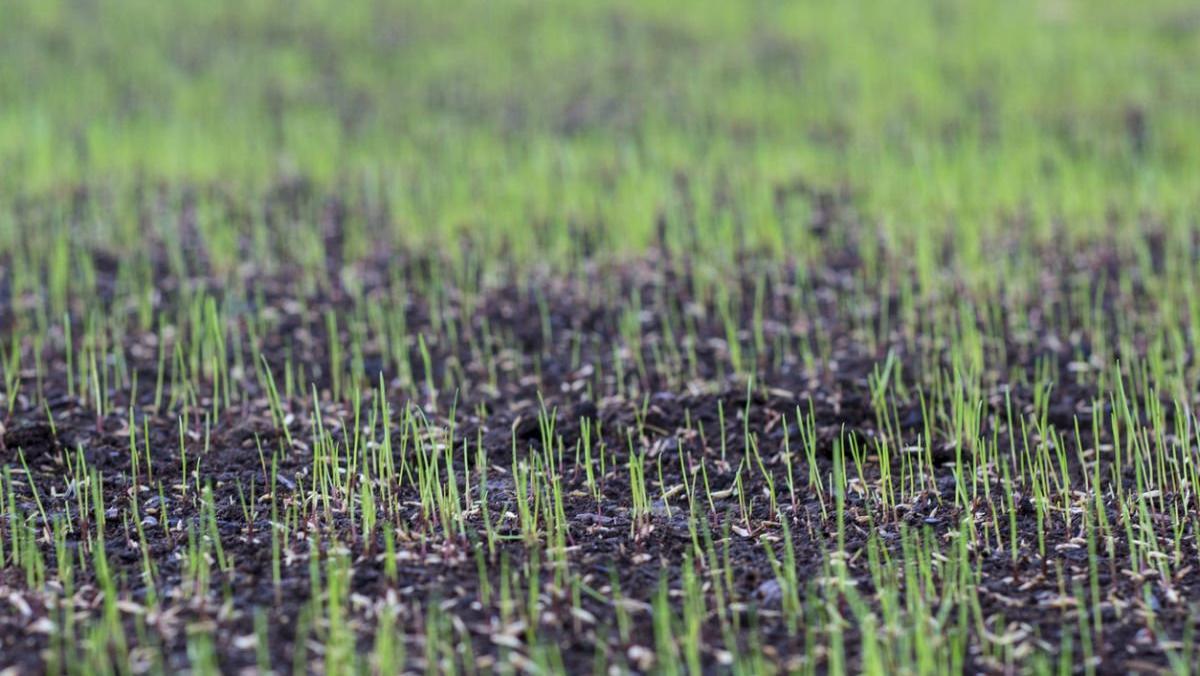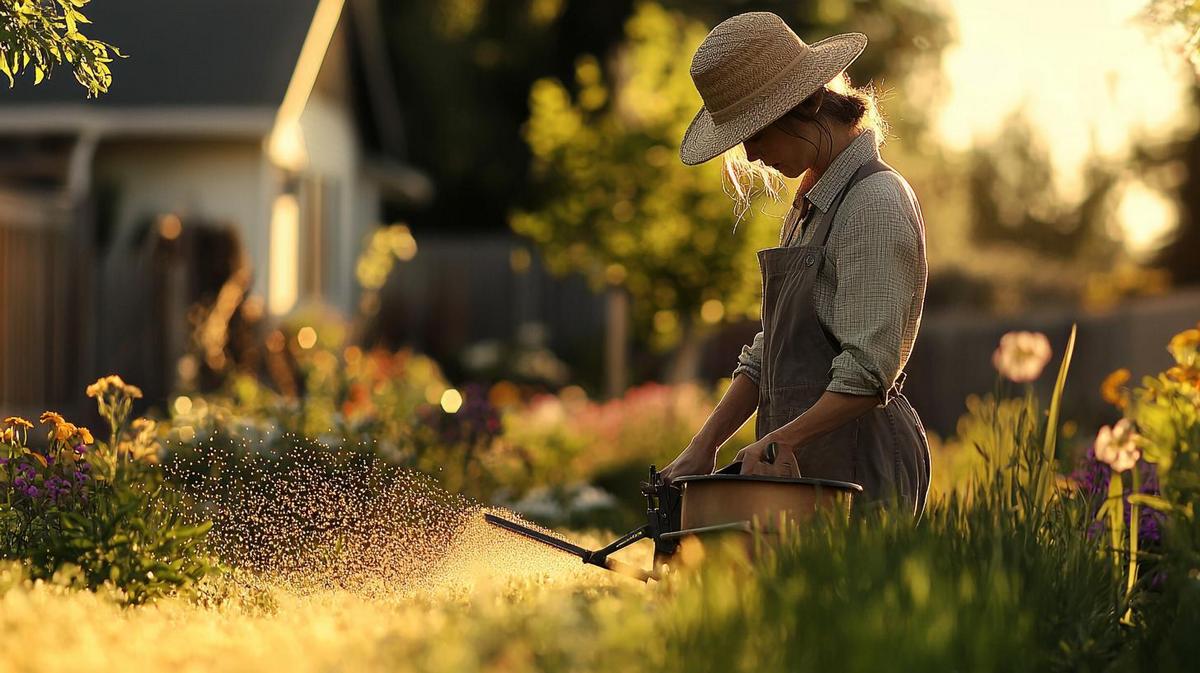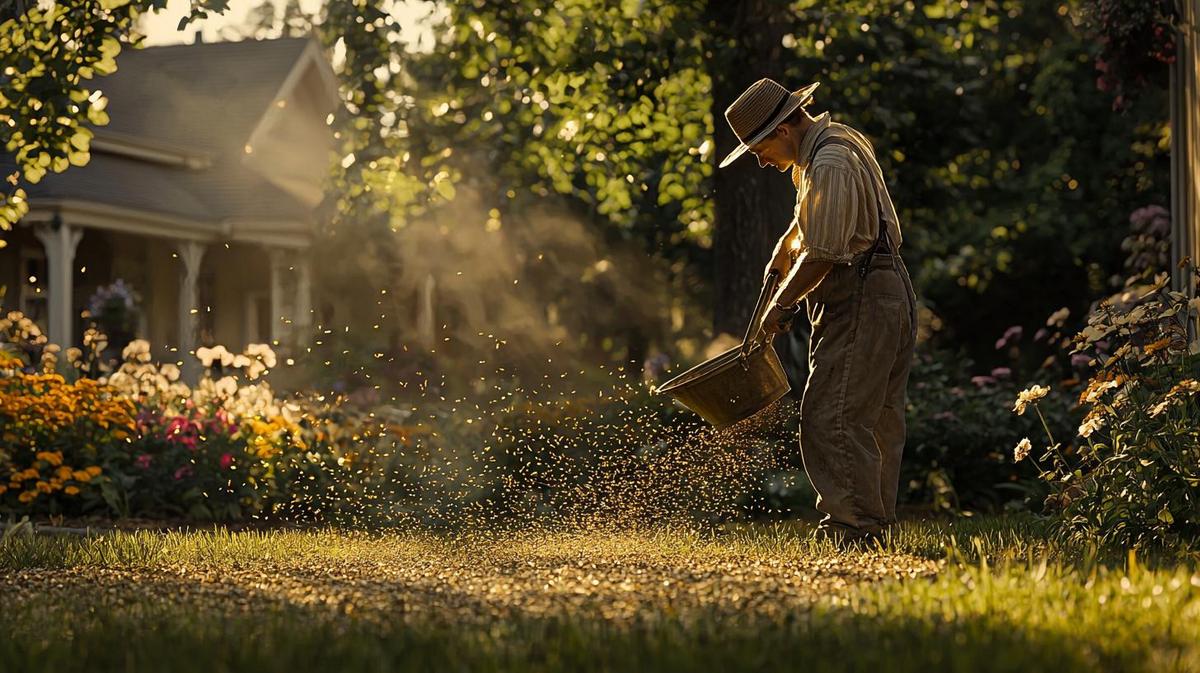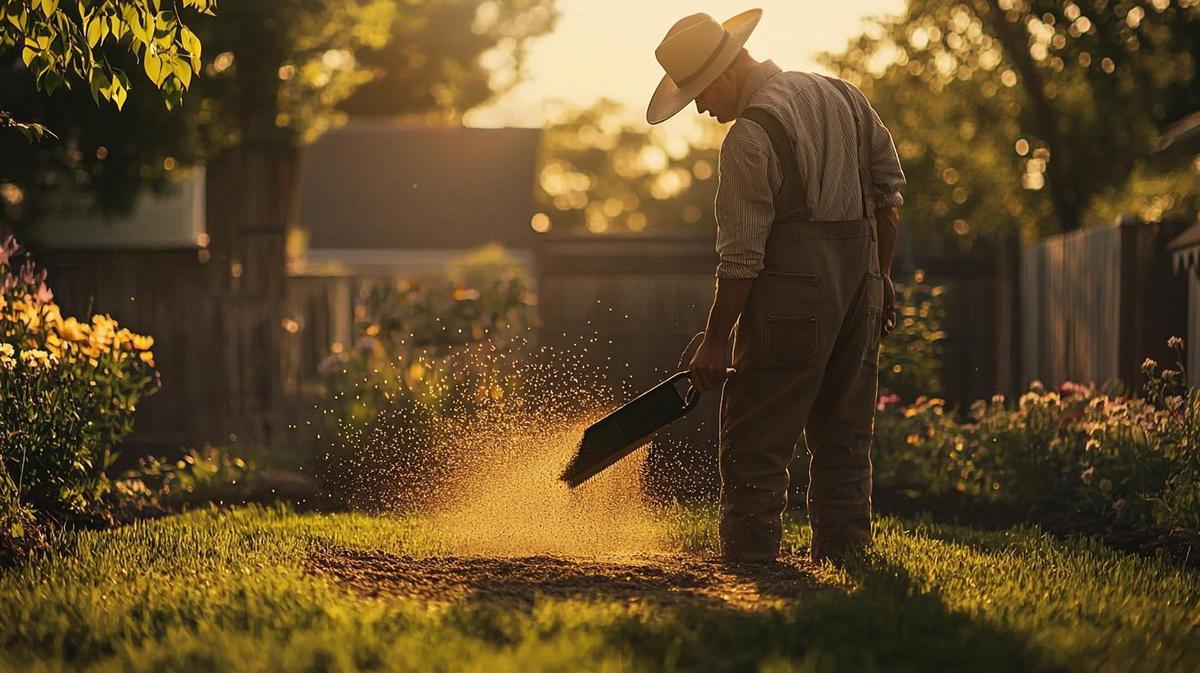Optimal Timing:
- Cool-season grasses: Late summer to early fall; warm soil & rain help growth.
- Warm-season grasses: Late spring to early summer; benefits from warm soil & rain.
Grass Type Preferences:
- Cool-season: Thrive in cooler climates (e.g., fescue, ryegrass).
- Warm-season: Prefer warm air/soil (e.g., Bermuda, Zoysia).
Fall Seeding Advantages:
- Warm soil, ample moisture, and root establishment before winter strengthens lawns.
Spring Seeding Benefits for Warm-season Grasses:
- Rising soil temperatures and spring rains aid germination.
Regional Influences:
- Seeding times vary by climate (cold: fall; warm: spring).
Essential Growth Factors:
- Key factors: Water, sunlight, temperature stability, and soil quality/nutrients.
Beginner Tips:
- Tools: Rake, spreader, hose.
- Steps: Prepare soil, seed evenly, and maintain moisture. Avoid mistimed planting and overwatering.
Everyone dreams of a lush, green lawn. When is the best time to start seeding? Choosing the perfect time for lawn seeding can mean the difference between a vibrant yard and a patchy mess. Whether you're aiming to enhance your property's value or save time with professional expertise, timing is crucial. We'll dive into the prime seasons for seeding and how they affect seed success. Ready to transform your lawn into a stunning masterpiece? Let's start!
Why is Timing Crucial for Planting Grass Seed?
Timing is key when planting grass seed. It can make or break your lawn. Choosing the right time helps your grass sprout and grow strong, setting the foundation for a lush lawn. So, what are the seasonal considerations for grass seeding? The best time for lawn seeding depends on the season. For cool-season grasses, late summer to early fall is perfect. At this time, the soil remains warm from summer, which helps seeds sprout faster. There’s also more rain in fall, so you save on watering efforts. Warm-season grasses perform best in late spring to early summer. Warm soil and spring rains aid in seeding success, ensuring a steady growth cycle.
How do grass types affect planting timing?
Different grasses have different seed preferences. Cool-season grasses, like fescues and ryegrass, prefer cooler air and warm soil. Warm-season types, such as Bermuda and Zoysia, enjoy warm air and soil conditions. Understanding these preferences helps you plan the timing of planting grassseedsd. This planning also guides grass seed and fertilizer timing, which is crucial for lawn health.
Why does proper timing enhance germination success?
Seeds need the right mix of conditions to sprout and grow well. Correct timing ensures seeds get enough sunlight, warmth, and moisture. Grass seedlings usually emerge in 7 to 21 days, given good conditions. Starting seeds during the best time lets seedlings settle before tough weather arrives. This approach is vital for achieving a resilient, thriving lawn. Proper planning and timing, together with lawn care, help turn your yard into a lush paradise. For more insights, you can check the best time to plant grass seed.

What Makes Fall the Ideal Season for Seeding?
Fall stands out as the best time to seed your lawn. The key lies in the warm soil temperatures that benefit cool-season grasses. These temperatures help seeds germinate faster, ensuring strong growth. Cool-season grasses like fescue and Kentucky bluegrass thrive during this time. The soil holds just enough warmth as summer fades, giving seeds a strong start.
Another advantage is the fall's optimal moisture level. With cool air and frequent rain, your lawn needs less water from you. Natural rainfall in fall helps maintain soil moisture, crucial for seed development. This reduces the risk of over-watering and helps seeds become established without much extra effort.
Planting in the fall also aids lawn establishment. Grass plants need time to build strong roots before winter hits. When seedlings grow during fall, their roots can dive deep into the soil. This leads to a healthier lawn that lasts through the hot months of summer and cold winters. Once spring arrives, you'll see a green, thick lawn already in place.
Fall is the ideal grass-seeding season for cool-season grasses. Thanks to the climate, it offers warmth and moisture while supporting root growth. Always ensure you plant the best grass for fall, as timing shapes success. Proper preparation is significant, from the choice of seed type to seeding techniques. With these efforts, you can help your lawn become lush and long-lasting.

What Are the Benefits of Spring Seeding for Warm-Season Grasses?
Spring seeding holds powerful benefits for warm-season grasses. These grasses thrive when the soil starts to warm up. Why do warm-season grass seeds prefer spring? The answer is clear; spring offers the perfect mix of temperature and soil conditions. During this time, soil temperatures rise consistently, which is ideal for the seeds to sprout. When you plant in spring, the seeds get a head start before the heat of summer sets in.
Spring weather also helps seeds germinate well. How do spring weather patterns aid in germination? The cycle of spring rains provides a gentle and needed soak for your seeds. With this natural watering, the seeds absorb enough moisture to start growing strong roots. A good root base is essential for a healthy and resilient lawn. Additionally, early seasonal rains mean less need for extra watering on your part.
Knowing the best practices for spring seeding enhances these benefits. First, you should choose seeds specifically designed for warm climates. Is it important to consider the type of seed? Because only specific seeds perform well in warm seasons. You can see the recommended products here.
Before you plant, prepare your soil with care. Make sure the soil is loose and free of debris to help seeds settle. Timing your planting just right and following these tips will lead to a lush lawn. Checking the spring lawn seeding guide ensures you’re on the right track. By nurturing your lawn at the best time, you will pave the way for vibrant green grass, all summer long.

How Can Regional Differences Influence Lawn Seeding?
How should you adapt seeding practices based on your region?
The key to successful lawn seeding is adapting to your region's climate. Review regional seeding calendars to find the best times to plant. In areas with cold winters, like the Midwest, fall is often the top choice. Here, soil warmth and increased rain help cool-season grasses thrive. In warmer regions, consider a spring schedule. This aligns with warm-season grass needs. Knowing these differences helps ensure the right start for your lawn.
What are the common grass types for different climates?
Different regions need different grass types. Cool-season grasses, like Kentucky Bluegrass, suit harsher northern climates. They're great for chilly summers and mild winters. Warm-season grasses, such as Bermuda grass, love southern warmth. These grasses prefer hot summers and don't mind the heat. Understanding grass types for your region makes your choice clearer.
How can regional weather patterns affect seeding schedules?
Regional weather sets the seeding schedule. In cooler areas, seeding in late summer through early fall works best. This timing takes advantage of cooling temperatures and good rain. In warmer areas, late spring through early summer is ideal. The soil stays warm, which helps seeds grow quickly. Examine regional forecasts to plan your lawn care best. Grass seedlings require stable weather to become strong before harsh seasons start. Adapting to weather patterns boosts germination success and ensures a lush, thriving lawn.

Which Factors Affect Seed Growth Most Significantly?
Growing a lush green lawn is all about understanding the essentials. So, what environmental factors play a role in grass seed germination? Water, sunlight, and air quality are the key factors that you must consider first. Without enough water, seeds cannot sprout. Sunlight helps grass seeds by providing them with the energy needed to grow. Air quality is crucial because it affects how plants breathe.
How does temperature fluctuation impact seed growth?
Seeds require specific soil temperatures to germinate. For many grass types, soil needs to stay between 50°F and 65°F for cool-season, and between 60°F and 75°F for warm-season grasses. Rapid temperature changes make seed growth challenging because seeds need stable conditions to flourish.
Which soil conditions contribute to successful seeding?
First, consider soil type. Loamy soil is ideal for grass because it holds moisture well without waterlogging roots. You must make sure the soil pH is just right, ideally around 6.0 to 7.0. Remember, acidic or alkaline soils hinder growth, so test your soil's pH and adjust as needed. Another necessary factor is soil nutrients—especially nitrogen, phosphorus, and potassium. These help seeds grow stronger and healthier.
To boost your lawn’s potential, try using specialized products designed to improve seeding. They can offer a balanced mix of vital nutrients your lawn needs.
By tweaking the environment, understanding temperature needs, and nourishing the soil, you can develop a thriving lawn. Keep testing and adjusting for the best results. With some energy and care, you'll grow that inviting green carpet you might be dreaming of for your yard.
How Should Beginners Approach Lawn Seeding?
Starting a lawn from seed can feel overwhelming, but I'm here to simplify it. First, let's talk about the tools and materials you need. Essential tools include a rake to level the soil, a seed spreader for even distribution, and a garden hose to keep everything moist. You'll also need quality grass seed, and you can begin by learning when to seed your lawn. Don't forget to invest in some fertilizer to feed your new lawn.
Now, let's walk through a step-by-step lawn seeding process. Start by preparing the soil. Use the rake to remove any debris and loosen the top layer. Spread the grass seed evenly across the soil with your spreader, following the guidelines on the package. Next, lightly rake the area again, ensuring the seeds are covered. After seeding, keep the soil moist by watering it gently. Aim to keep the top inch of soil damp for the first few weeks. This encourages the seeds to germinate and grow strong roots.
As a beginner, you might make some common mistakes. For instance, planting at the wrong time can hinder growth. Timing is essential; cool-season grasses prefer late summer to early fall, while warm-season grasses do better in late spring. Another mistake is skipping soil preparation. Good soil ensures seeds get the nutrients they need. Overwatering can lead to disease, so stick to a regular watering schedule. With the right approach and a bit of patience, you'll have a lush, green lawn in no time.
Conclusion
Timing is key to growing a lush lawn. Each season offers different benefits for seeding. Fall is perfect for cool-season grasses, while spring caters to warm-season sprouts. Regional climates further tweak planting schedules. Focus on soil, temperature, and timing for success. As a beginner, start slow and follow proven steps. A well-timed plan will create a beautiful, green lawn year-round. Stick to the basics, and enjoy your vibrant lawn with ease.
